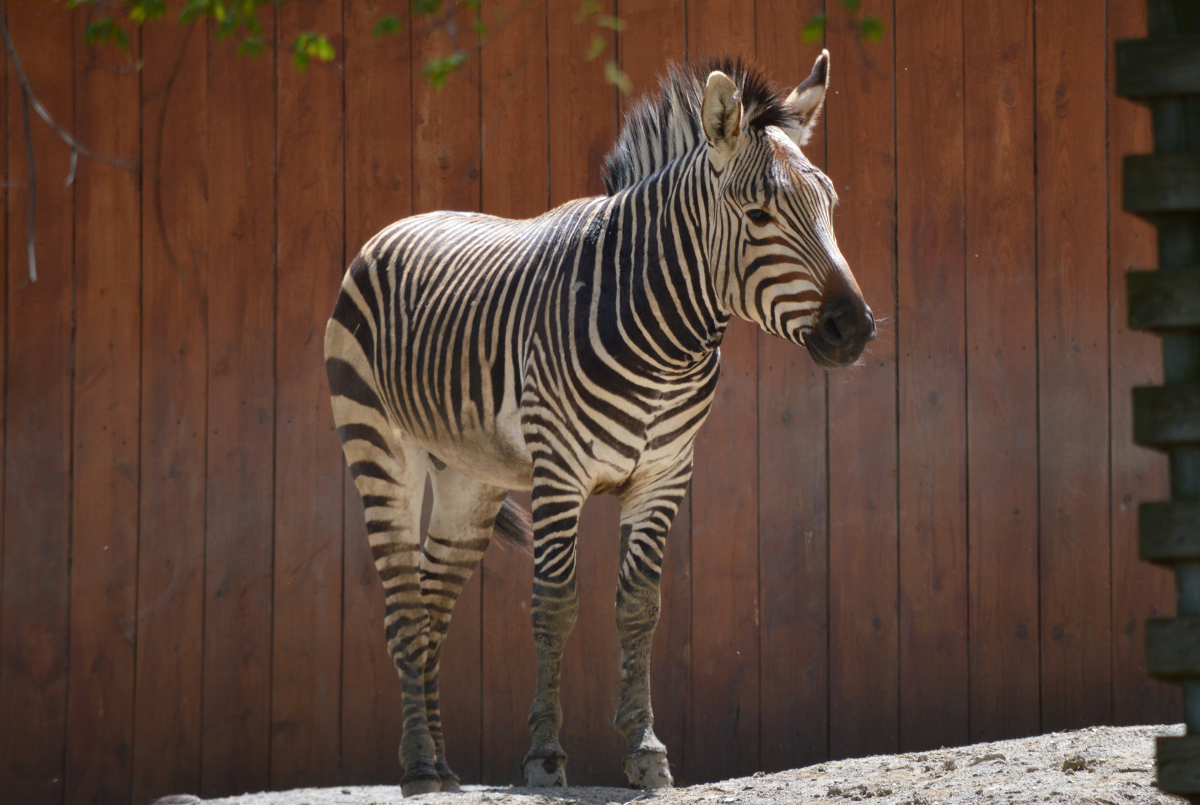Hartmann's Mountain Zebra

Basic Information:
Scientific Name: Equus zebra hartmannae
Habitat: Mountain Zebra live in the mountains, dry-rocky-hilly regions, slopes, and plateaus of coastal Namibia and southern Angola.
Diet: Being herbivores, mountain zebras eat grasses, leaves, and shrubs.
Size: 3.7 to 4.9 feet tall / 6.8 to 8.5 feet long
Weight: 515 to 620 pounds
Lifespan: 12.3 years for males & 15.2 years for females according to AZA Species Survival Statistics
Distribution Map:
I.U.C.N. Conservation Status:

What does this mean?
Vulnerable – a species determined by the International Union for Conservation of Nature (I.U.C.N.) to possess a high risk of extinction as a result of rapid population declines of 30 to more than 50 percent over the previous 10 years (or three generations), a current population size of fewer than 1,000 individuals, or other factors.
Our Hartmann's Mountain Zebra:
Rundu (Male) – Born December 28, 2011
Zecora (Female) – Born November 28, 2013
Zara (Female) – Born July 30, 2022
About Hartmann's Mountain Zebra:
There are two species of mountain zebra in the world: Cape and Hartmann’s. Cape mountain zebras can be found up to 2,000 meters above sea level in South Africa, but move to lower elevations in the winter. Hartmann’s mountain zebras on the other hand can be found in the arid, mountainous regions of the Namib desert of Namibia and Angola. Due to this dry habitat, these crepuscular zebras have to consistently travel between locations during the early morning and evening to find drinkable water. In fact, Hartmann’s mountain zebras are known to dig down 3 feet to uncover hidden water. This action sustains the zebra populations AND benefits plenty of other desert animals as well. When they aren’t traveling or grazing, these zebras are commonly found at play. Types of play include chasing, racing, play-fighting, and challenge games. Challenge games usually consist of nose-to-nose contact followed by mutual grooming. All of these activities help to increase the bond between the zebras in a herd.
Did You Know?!
- During cold weather, mountain zebras shelter in wooded areas or caves and go to east-facing slopes to warm up in the morning sunshine.
- Mountain zebras act in response to the alarm signals of black wildebeest. However, they rarely respond to alarm signals of smaller antelopes.
- A mountain zebra’s night vision is thought to be about as good as an owl’s!
- No two zebras are alike; each has a distinct stripe pattern, just like with human fingerprints.
- A mountain zebra’s heart weighs three times that of a plains zebra to accommodate the increased number of oxygen-carrying red blood cells needed in a high altitude environment.
- Mountain zebras have been known to be able to gallop up to 40mph and jump 6 feet into the air!
